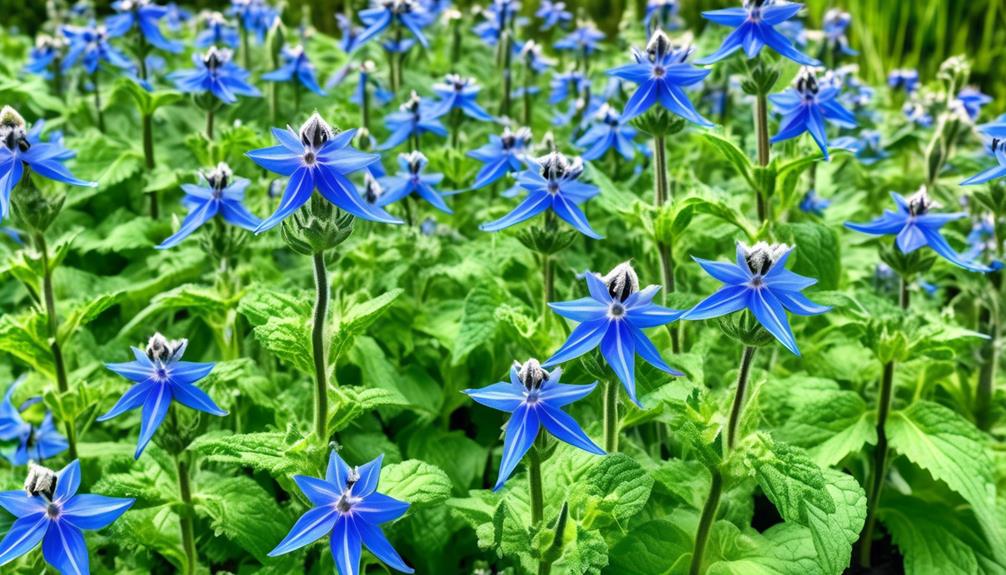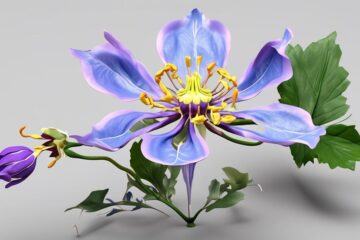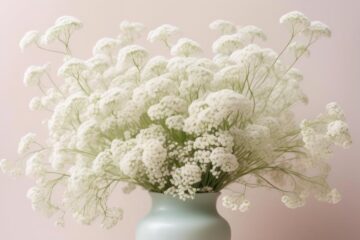Are you looking to add a touch of bravery and boldness to your garden? Look no further than borage, the starflower that brings a unique charm to any outdoor space.
With its vibrant blue petals and low-maintenance nature, borage is the perfect choice for both novice and seasoned gardeners. But its appeal doesn't stop there.
This resilient plant has a secret power that attracts beneficial insects and enhances the flavors of various dishes. Intrigued? Stay tuned to discover the fascinating world of borage and all it has to offer.
Borage's Medicinal Properties
Borage's medicinal properties have been recognized and utilized for centuries in herbal medicine. This starflower, also known as borage, has long been revered for its healing abilities. The plant's leaves and flowers contain powerful compounds that have been used to treat a variety of ailments. Borage has been traditionally used to alleviate colic, gastrointestinal disorders, asthma, and skin conditions like eczema and dermatitis.
Its leaves and flowers can be consumed in salads, teas, and sandwiches, providing both a unique taste and potential health benefits. With its vibrant blue star-shaped flowers, borage also attracts pollinators, making it a valuable companion plant for other crops. Additionally, borage has the remarkable ability to enrich the soil over time, adding nitrogen and organic matter as it decomposes each year.
Story and Origins
With its rich history and origins in the Mideast, specifically the Syrian region, borage has captivated people for centuries. This starflower has a fascinating story that dates back to the early 1800s. According to folklore, borage was believed to provide courage and bravery to those who consumed it.
Its vibrant blue star flowers have acted as a beacon for pollinators, making it a magnet for beneficial insects like bees and wasps. Borage's medicinal value has been recognized for centuries in herbal medicine, with its rich nutrients and various uses in treating skin disorders and gastrointestinal issues.
This easy-to-grow and resilient plant has adapted to different soil types and growing conditions, further adding to its allure. The story and origins of borage make it a truly remarkable and cherished plant.
Cultural Significance
Borage holds great cultural significance, with its historical use in uplifting spirits and its valued role in medicinal remedies.
Throughout history, borage has been associated with courage and bravery, making it an important symbol in various cultures. In the Mediterranean region, borage flowers were commonly added to tankards of wine and cider, believed to instill courage in those who consumed them. The plant's folklore highlights its use in tea, which was believed to uplift spirits and provide courage during challenging times.
Borage's cultural significance extends to its culinary use as well. Its edible flowers and leaves are incorporated into salads, teas, and even used as a flavoring component in beverages.
This versatile plant's cultural importance is evident in its historical and present-day usage.
Borage's Mystical Associations
Legend has it that the enchanting borage plant has mystical associations that captivate the imagination. This brave and bold starflower has long been associated with courage and bravery, uplifting spirits and providing a sense of fearlessness.
In folklore, borage was believed to possess magical properties, bestowing its users with confidence and strength. It was commonly used in Mediterranean drinks, such as wine and cider, to enhance their mystical effects. Borage's ability to attract pollinators and act as a natural companion plant further adds to its mystical allure.
Planting borage near certain vegetables is believed to enhance the flavor of the produce, making it even more magical. With its extensive medicinal value and nutrient-rich composition, borage continues to be revered in herbal medicine as a source of both physical and spiritual healing.
Borage Maintenance Tips
Regular maintenance is essential to keep your borage plants healthy and thriving. To ensure their well-being, follow these borage maintenance tips.
- Plant borage near your vegetable garden to attract pollinators and deter pests. You can start borage from seeds, as it germinates easily, and it's best to plant them in full sun for optimal growth.
- Regular watering is crucial, especially during dry periods, to keep the soil moist but not waterlogged.
- Deadheading the spent flowers regularly will encourage continuous blooming and prevent self-seeding if desired.
- Mulching around your borage plants will help retain soil moisture, suppress weeds, and provide insulation during temperature fluctuations.
- Lightly fertilize your borage in spring with a balanced fertilizer to support healthy growth.
- Pruning can also be done to control the size and shape of the plant, while removing any damaged or diseased foliage promotes overall plant health.
Best Occasions for Gifting
For those searching for a unique and meaningful gift, consider borage, the brave and bold starflower. Borage makes a thoughtful gift for various occasions, such as housewarmings, birthdays, and anniversaries. It's especially suitable for garden enthusiasts and nature lovers.
If your recipient is interested in herbal remedies and natural medicine, borage is a great choice. Not only does it enhance the beauty of their garden with its vibrant blue flowers, but it also attracts pollinators. Additionally, borage is edible, making it a perfect gift for individuals who enjoy cooking and experimenting with edible flowers and herbs.
Concluding Thought
To conclude, borage is a remarkable and versatile plant that brings beauty, biodiversity, and culinary delight to any garden. Its self-sowing nature makes it easy to grow and maintain, while its vibrant blue star-shaped flowers attract pollinators, benefiting the overall health of your garden. The leaves and flowers of borage have a mild cucumber flavor, adding a unique taste to your dishes. Not only is borage edible, but it also has medicinal value due to its rich nutrient content. Furthermore, borage acts as a natural repellent for pests and enhances the flavor of neighboring vegetables, making it a great companion plant. With its historical significance and association with courage and bravery, borage is not just a beneficial plant, but also culturally and historically relevant.
| Borage | is a versatile and resilient plant | that self-sows, making it easy to grow |
| Its vibrant blue star-shaped flowers | attract pollinators, increasing biodiversity | and contributing to a healthier ecosystem |
| Borage is edible | with a mild cucumber flavor | and has medicinal value |
Frequently Asked Questions
Who Should Not Use Borage?
You should not use borage if you have liver issues, are pregnant or breastfeeding, have allergies to plants in the Boraginaceae family, have kidney problems, or are on medications that affect liver function.
Is Borage the Same as Starflower?
Yes, borage is the same as starflower. It's a plant with bright blue flowers and gray-green leaves. It can be propagated from seed and has various uses, including being edible and having medicinal properties.
What Are Common Problems With Borage?
Common problems with borage include self-seeding, which can lead to unwanted spread, and the presence of pyrrolizidine alkaloids, which can harm the liver. However, borage is generally hardy and doesn't suffer from many insect or disease problems.
Does Borage Become Invasive?
No, borage doesn't become invasive. It's a resilient and adaptable plant that can tolerate poor soils and drought without taking over your garden. Plus, its self-seeding nature makes it easy to manage.





